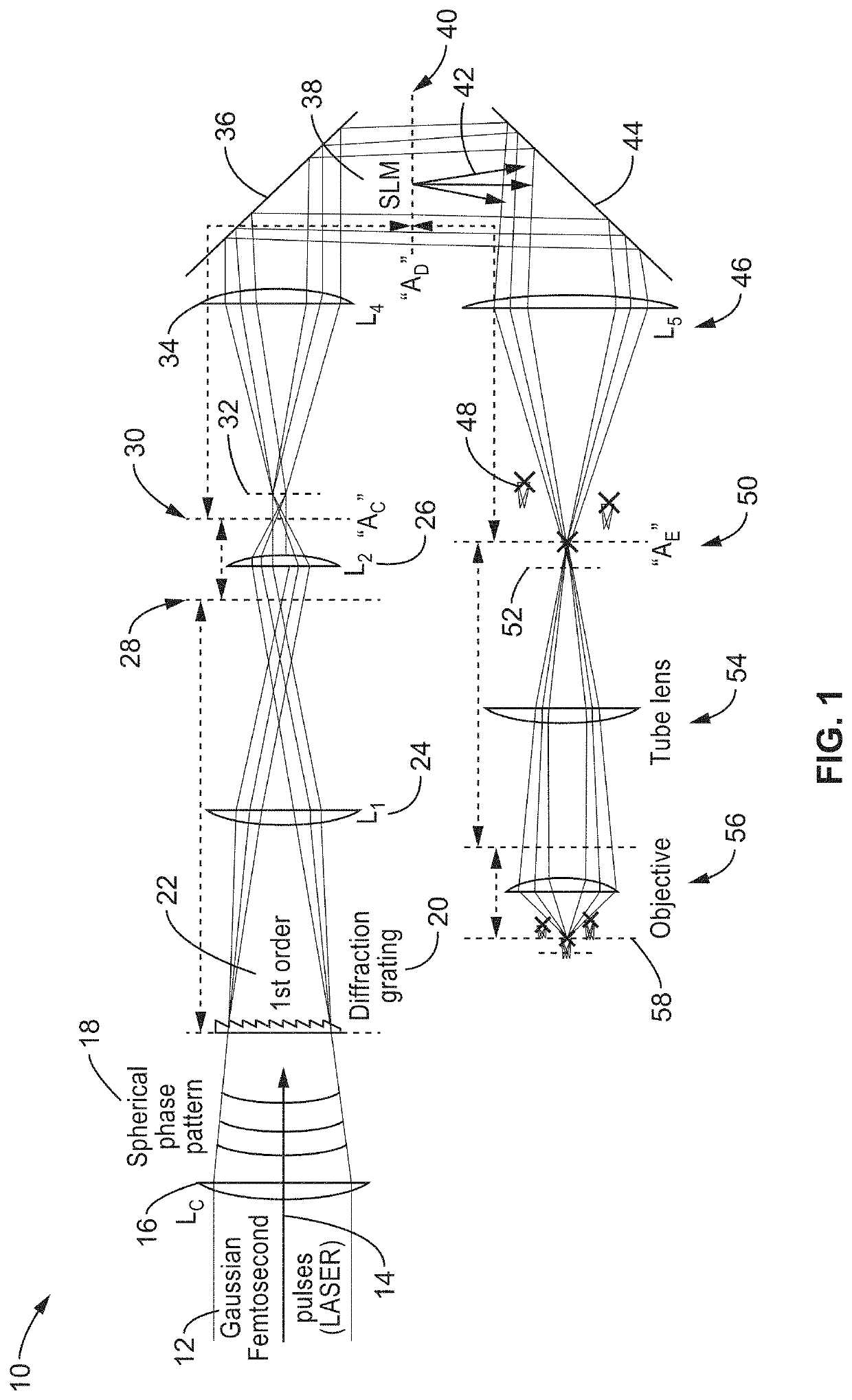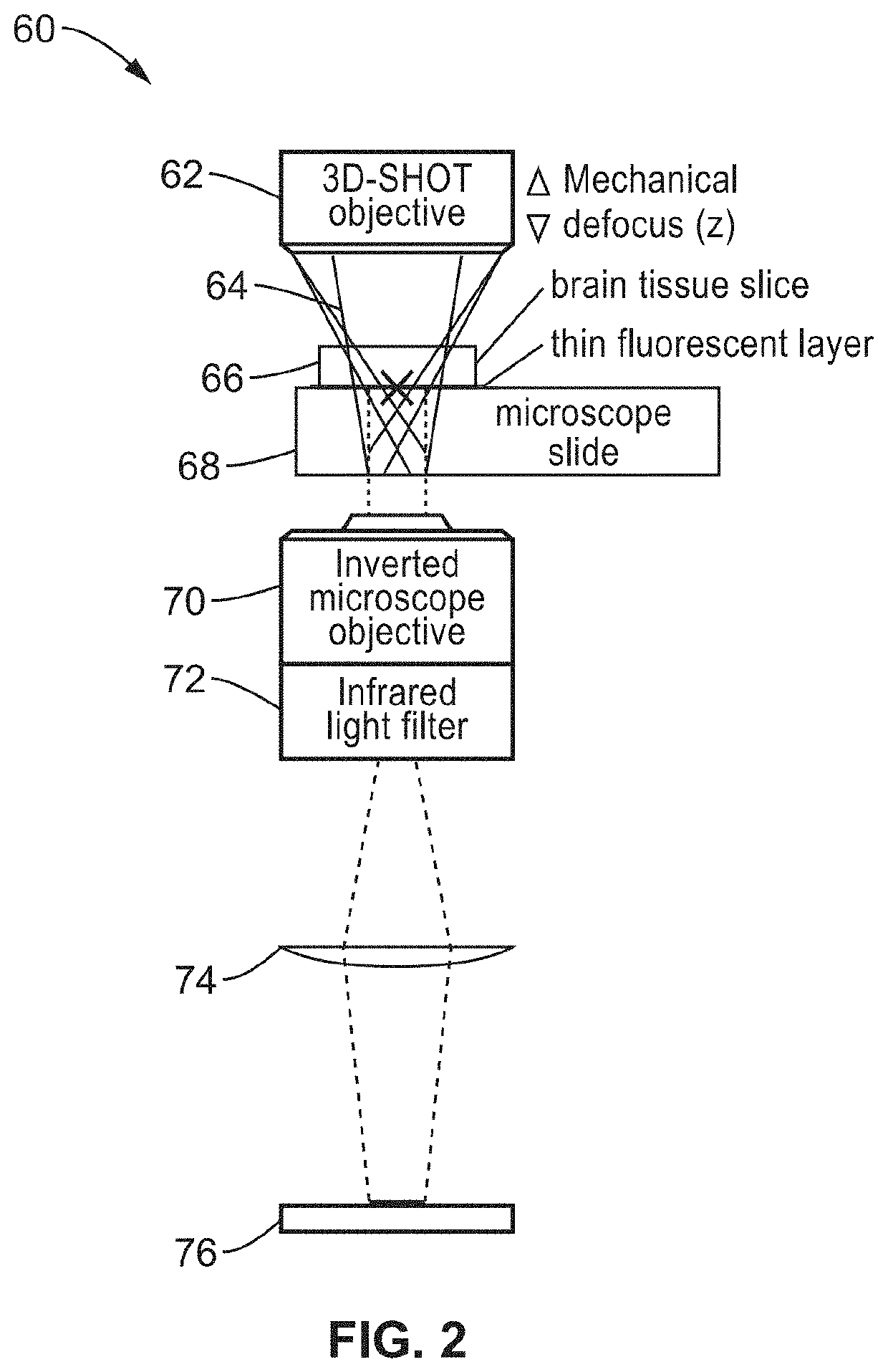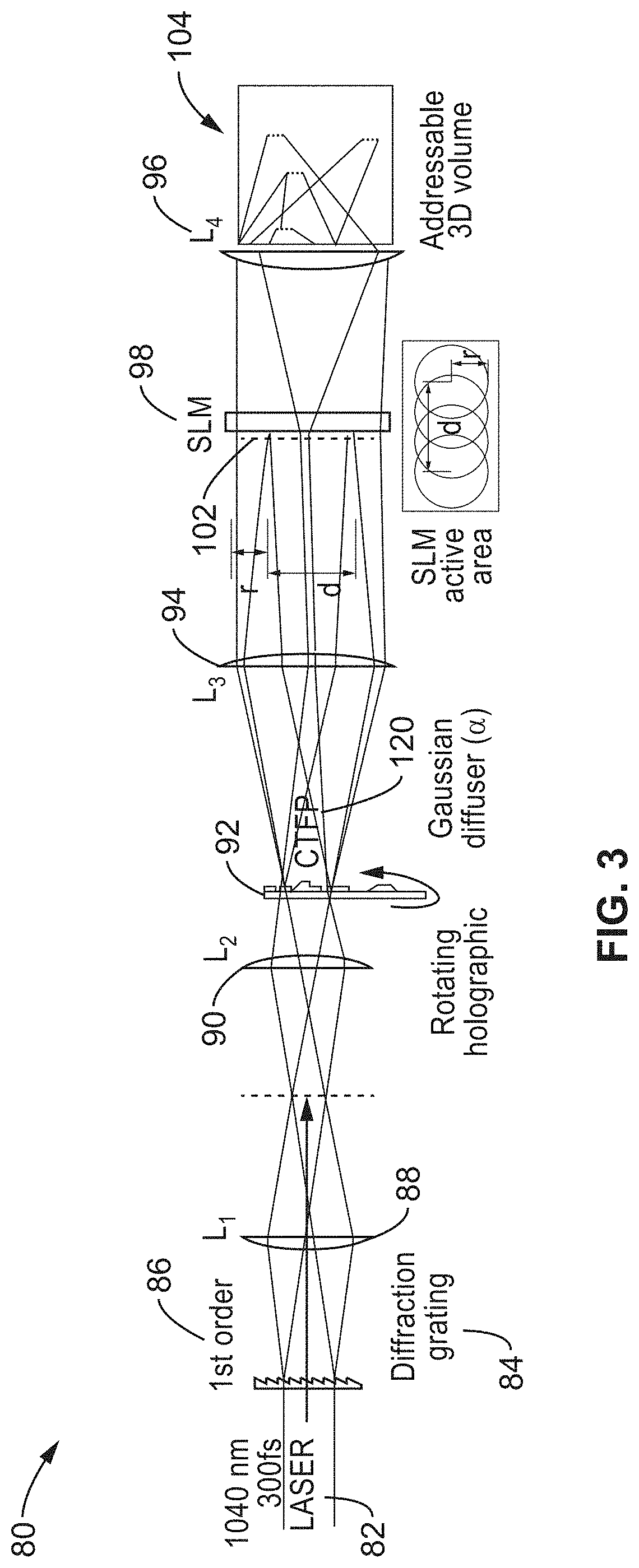Three-dimensional scanless holographic optogenetics with temporal focusing
a technology of optogenetics and holographic images, applied in the field of three-dimensional scanless holographic optogenetics with temporal focusing, can solve the problems of limited specificity, unsuitable long-term use, and methods developed for optogenetic photostimulation, and achieve high fidelity in space and tim
- Summary
- Abstract
- Description
- Claims
- Application Information
AI Technical Summary
Benefits of technology
Problems solved by technology
Method used
Image
Examples
example 1
[0081]To evaluate the capabilities of 3D-SHOT and to quantify how two-photon absorption is spatially distributed in 3D, an apparatus was assembled as generally shown in FIG. 1.
[0082]CGH and 3D-SHOT characterization tests were performed by recording two-photon induced fluorescence on a calibration slide with an inverted microscope. A Basler ACa2500 camera, and a Leitz 6.3× Objective were used to map the entire operational range of the SLM on the camera sensor. Two infrared filters were placed along the light-path to eliminate the remaining laser light, leaving only the fluorescence signal in the visible range to be recorded by the camera sensor.
[0083]For power characterizations, thick auto-fluorescent plastic slides (Chroma) were used to simultaneously collect fluorescence light within the entire volume of excitation from a single focused image. For more precise 3D characterization of two photon absorption, a custom-made thin film of fluorescent paint (Tamiya Color TS-36 fluorescent ...
example 2
[0094]The 3D-SHOT apparatus and methods were also evaluated for use in neurobiological applications. The apparatus was configured with a pair of mirrors on a sliding stage to rapidly swap between conventional holography (CGH) and 3D-SHOT. The two optical paths were aligned so that the centers of the CTFP (3D-SHOT path) and the disc illumination (CGH path) were co-aligned along all 3 dimensions. This allowed both methods to be tested on individual cells without any digital realignment of the holograms.
[0095]The spatial resolution of the 3D-SHOT method was evaluated with quantitative measurements of the photocurrent amplitudes elicited by optogenetic stimulation in living cells. Microbial opsin proteins were expressed in either Chinese Hamster Ovary (CHO) cells in culture by transfection, or through in utero electroporation of mice embryos or viral transduction of neonatal mice to obtain expression in neurons in acutely prepared cortical brain slices or in vivo.
[0096]To measure the sp...
example 3
[0106]To further demonstrate the functionality of the apparatus and optical methods, new opsins were engineered to be optimized for multiphoton optogenetics using scanless approaches. Existing excitatory opsins have been shown to be too weak or too slow to drive precise neural activity patterns with scanless 2P optogenetics in vivo. To allow control of neural activity with sub-millisecond precision, an opsin and a 2P stimulation approach capable of generating large currents with rapid kinetics was sought. Several conventional opsins were evaluated. However, photocurrents were insufficient to reliably spike pyramidal neurons. Since none of the conventional opsins could reliably spike neurons in response to brief holographic stimulation, a stronger opsin was engineered with the goal of holographically stimulating large ensembles of neurons.
[0107]Mutations of the ST-Chronos opsin were performed with the aim of developing a variant that would preserve its fast kinetics but would generat...
PUM
 Login to View More
Login to View More Abstract
Description
Claims
Application Information
 Login to View More
Login to View More - R&D
- Intellectual Property
- Life Sciences
- Materials
- Tech Scout
- Unparalleled Data Quality
- Higher Quality Content
- 60% Fewer Hallucinations
Browse by: Latest US Patents, China's latest patents, Technical Efficacy Thesaurus, Application Domain, Technology Topic, Popular Technical Reports.
© 2025 PatSnap. All rights reserved.Legal|Privacy policy|Modern Slavery Act Transparency Statement|Sitemap|About US| Contact US: help@patsnap.com



